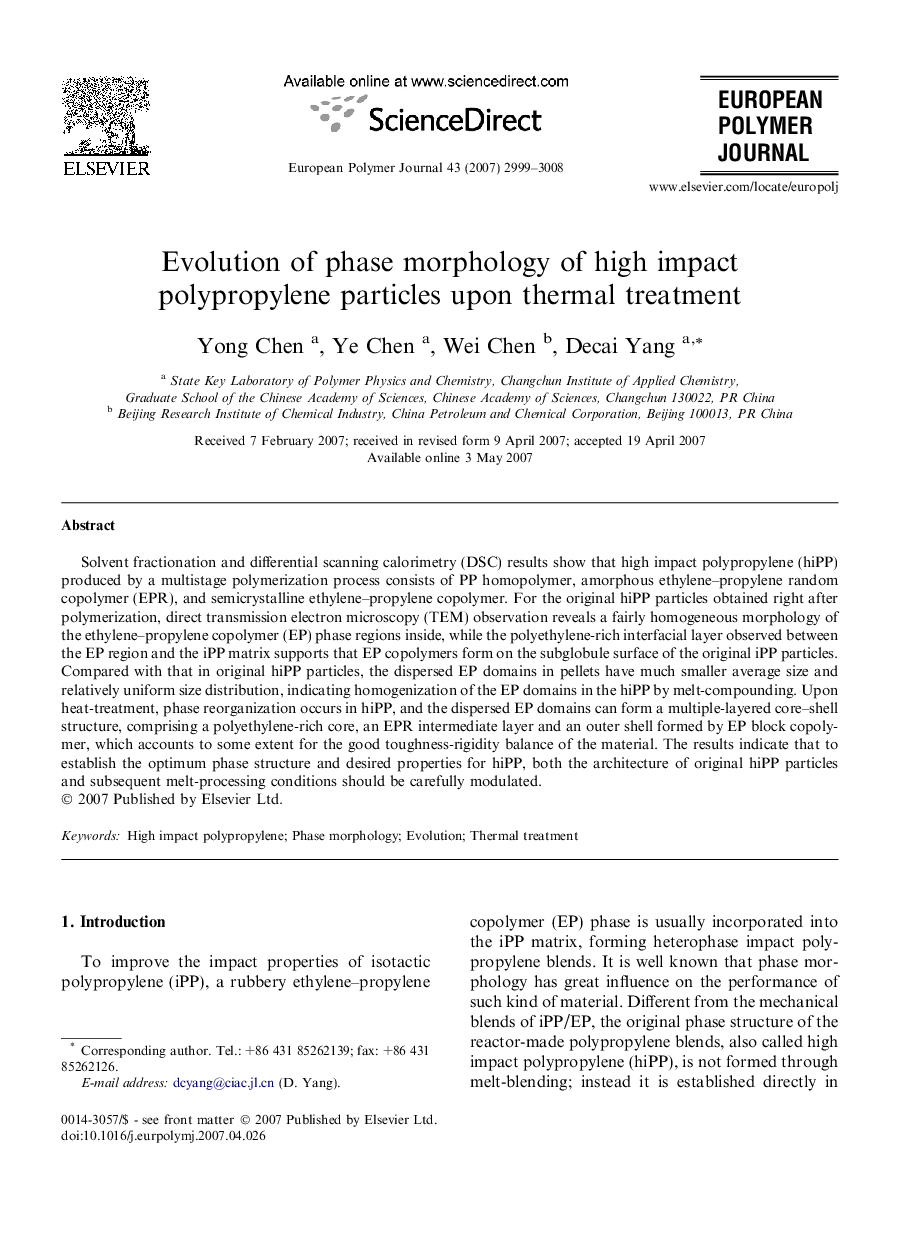| Article ID | Journal | Published Year | Pages | File Type |
|---|---|---|---|---|
| 1396664 | European Polymer Journal | 2007 | 10 Pages |
Solvent fractionation and differential scanning calorimetry (DSC) results show that high impact polypropylene (hiPP) produced by a multistage polymerization process consists of PP homopolymer, amorphous ethylene–propylene random copolymer (EPR), and semicrystalline ethylene–propylene copolymer. For the original hiPP particles obtained right after polymerization, direct transmission electron microscopy (TEM) observation reveals a fairly homogeneous morphology of the ethylene–propylene copolymer (EP) phase regions inside, while the polyethylene-rich interfacial layer observed between the EP region and the iPP matrix supports that EP copolymers form on the subglobule surface of the original iPP particles. Compared with that in original hiPP particles, the dispersed EP domains in pellets have much smaller average size and relatively uniform size distribution, indicating homogenization of the EP domains in the hiPP by melt-compounding. Upon heat-treatment, phase reorganization occurs in hiPP, and the dispersed EP domains can form a multiple-layered core–shell structure, comprising a polyethylene-rich core, an EPR intermediate layer and an outer shell formed by EP block copolymer, which accounts to some extent for the good toughness-rigidity balance of the material. The results indicate that to establish the optimum phase structure and desired properties for hiPP, both the architecture of original hiPP particles and subsequent melt-processing conditions should be carefully modulated.
